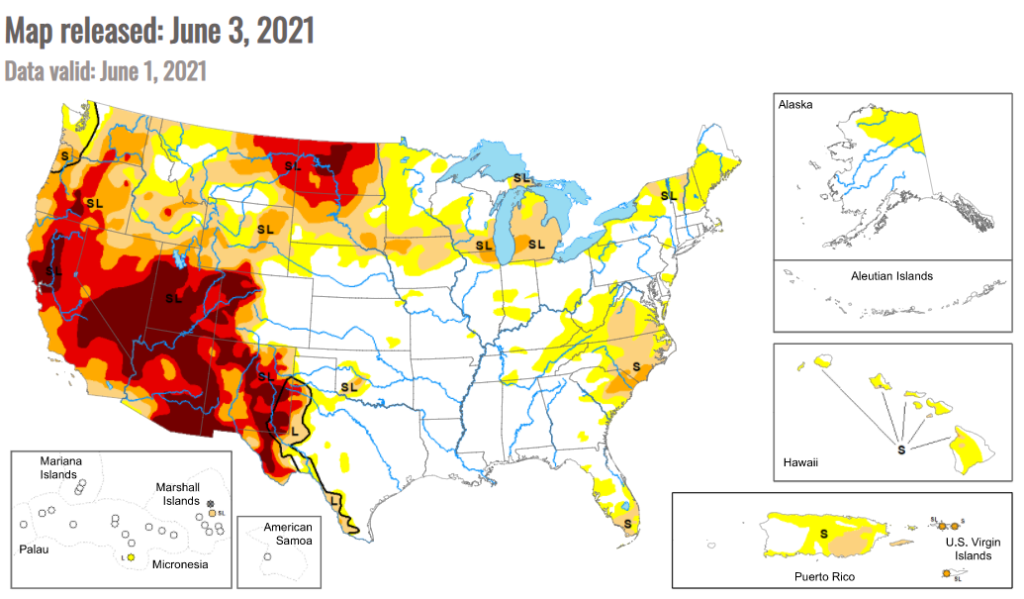What are the effects of drought on my lawn?
As we are approaching summer, many areas in the country are experiencing varying degrees of drought conditions. National Geographic comments that a lack of precipitation can cause a variety of problems for local communities, including damage to crops and a shortage of drinking water. For homeowners with beautiful and healthy lawns, droughts can have a serious impact on your grass and plants.

What is drought and why is it important for my lawn?
The Oxford Dictionary defines drought as a long period of time when there is little or no rain.
Short and long periods of drought can have long term effects on your lawn and may even kill your grass and plants.
How do I know if drought is affecting my lawn?
1. Your grass has a dull gray appearance. This happens because grass leaf blades begin to fold or roll inward due to lack of water. If you walk across your lawn, you may notice your footprints will remain imprinted for quite some time.


2. Your lawn looks thin and has poor color. In chronic situations where the lawn goes in and out of drought stress repeatedly, the lawn will have a thin, weak appearance with poor color.

I have irrigation sprinkler service and lawn care so my lawn shouldn’t be brown, right?
Not necessarily. Irrigation sprinklers are supposed to enhance the benefits of regular rainfall while regular lawn care services are used to create healthy soil and strong turf that will withstand weather conditions such as a drought.
During a drought, it is normal for areas of your lawn to turn brown. In some cases, this means that it’s going into its dormancy stage which means it can recover. Unfortunately, in extended drought, your lawn may die and need to be replaced.
Is my grass going to die?
If your grass is in the dormancy stage, it can recover given that you take the proper steps during the drought. However, it can die if not handled properly. You will be able to tell if your grass is dead by waiting until after the drought period has passed, the weather improves or when you begin to take measures to revive it. If the grass does not recover, then we can presume it died during the drought.
What should I do during a drought period?
- Do not mow unless necessary. If you do mow, use a sharp blade, mow as high as possible (3 inches or more) and avoid mowing during midday hours or during periods of high temperatures to avoid tire marks.
- Do not skip your scheduled lawn application service! It’s critical to continue your lawn service because it’s the perfect opportunity to spot treat for summer weeds (like crabgrass), monitor for insects and diseases and apply treatments that the lawn will use when the drought conditions break and growth resumes.
- Follow your local watering restrictions. We must all do our part to conserve our most precious resource.
- Water deeply and frequently. Apply ½ to ¾ of an inch of water per session. In most cases, this takes 20 to 30 minutes for pop up spray heads and 75 to 115 minutes for rotor heads.
- Supplement dry areas with hand-watering. Irrigation systems enhance the benefits of regular rainfall. Some areas of your lawn may show signs of drought stress. Rather than running an additional irrigation cycle, you can hand water these areas with a hose and spray nozzle. Apply ½ inch of water to these areas.
ACCORDING TO NATIONAL ASSOCIATION OF LANDSCAPE PROFESSIONALS, LAWNS CAN SURVIVE WITH AS LITTLE AS ¼ OF AN INCH OF RAIN OVER A SIX WEEK PERIOD.
What services should I have to help my lawn withstand the effects of a drought?
At Massey Services, we recommend the following services to help lawns withstand the effects of a drought:

- Fertilizer applications. Proper nutrition encourages healthy root development and promotes root growth. Deep, healthy roots uptake water and nutrients from deep in the soil more effectively. (Be sure to follow all local ordinances regarding the types of fertilizer allowed during the summer months.)
- Core aeration. Core aeration reduces soil compaction and aids in the absorption of water, nutrients and control products. Healthy turfgrass roots absorb water and filter stormwater runoff which prevents pollution from entering our lakes and streams.
- Lawn insect management. Insects, such as chinch bugs and grubs, are more damaging to lawns under drought stress. By preventing lawn insects, you are reducing injury to your lawn and the amount of pesticide required for treatment.
If you’re looking for services to help strengthen your lawn to help reduce effects of drought season, CLICK HERE to schedule a free, no-obligation inspection at a time that’s convenient for you.